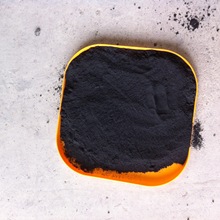As the Sun and stars themselves can attest, nuclear fusion could be an essentially unlimited energy source, if we can only harness it. The problem is that the plasma used is inherently unstable, and large eruptions can damage the reactors containing it. But now, physicists from the Princeton Plasma Physics Laboratory (PPPL) have found a way to prevent those large eruptions, by triggering lots of small ones through the injection of tiny pellets of beryllium.
Nuclear fusion is basically the opposite of nuclear fission, which is the method used in nuclear power plants around the world. Where fission involves splitting atoms and collecting the energy released, fusion is all about merging the nuclei of atoms together, which is cleaner, safer and more efficient than fission.
This is usually done in hollow, donut-shaped reactors called tokamaks, which are filled with rings of plasma as hot as the Sun. But as you'd expect, it takes tremendous effort to maintain the intense pressures and temperatures required for an "artificial star" here on Earth. Eruptions called edge-localized modes (ELMs) can damage the walls of reactors, making them less secure and requiring the replacement of parts far too regularly.
ELMs are hard to eliminate, but as the PPPL researchers wondered, maybe they can be controlled instead. The team found that creating a series of small ELMs could prevent larger, more damaging ones from occurring. These smaller eruptions could be triggered by injecting pellets of beryllium into the boiling plasma at regular intervals. The team was testing whether the technique could be used in ITER, a tokamak currently being constructed in France.
Computer simulations showed that granules of beryllium, measuring about 1.5 mm thick, could get deep enough into the plasma to trigger ELMs most effectively. Next, the team ran physical experiments in the DIII-D, a tokamak reactor housed in the National Fusion Facility in San Diego.
The researchers used magnetic fields to constrain the plasma in the same way ITER will, and injected granules of carbon, lithium and boron carbide, which are all light metals with similar properties to beryllium. And the first results appear successful.
"This is the first attempt to try to figure out how these impurity pellets would penetrate into ITER and whether you would make enough of a change in temperature, density, and pressure to trigger an ELM," says Rajesh Maingi, co-author of the study. "And it does look in fact like this granule injection technique with these elements would be helpful."
The team says that beryllium pellets could be one of many plasma-management tools put to use in tokamaks, with others including external magnets and deuterium pellet injections. The next step is to test the technique out on other tokamaks, like the Joint European Torus (JET) in the UK.
The research was published in the journal Nuclear Materials and Energy.
Source: PPPL









